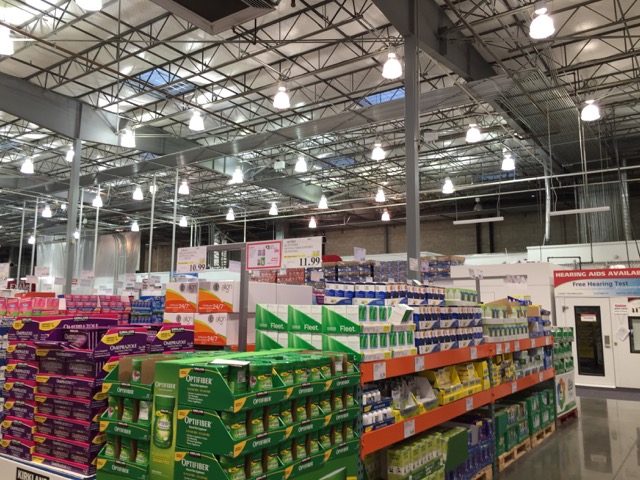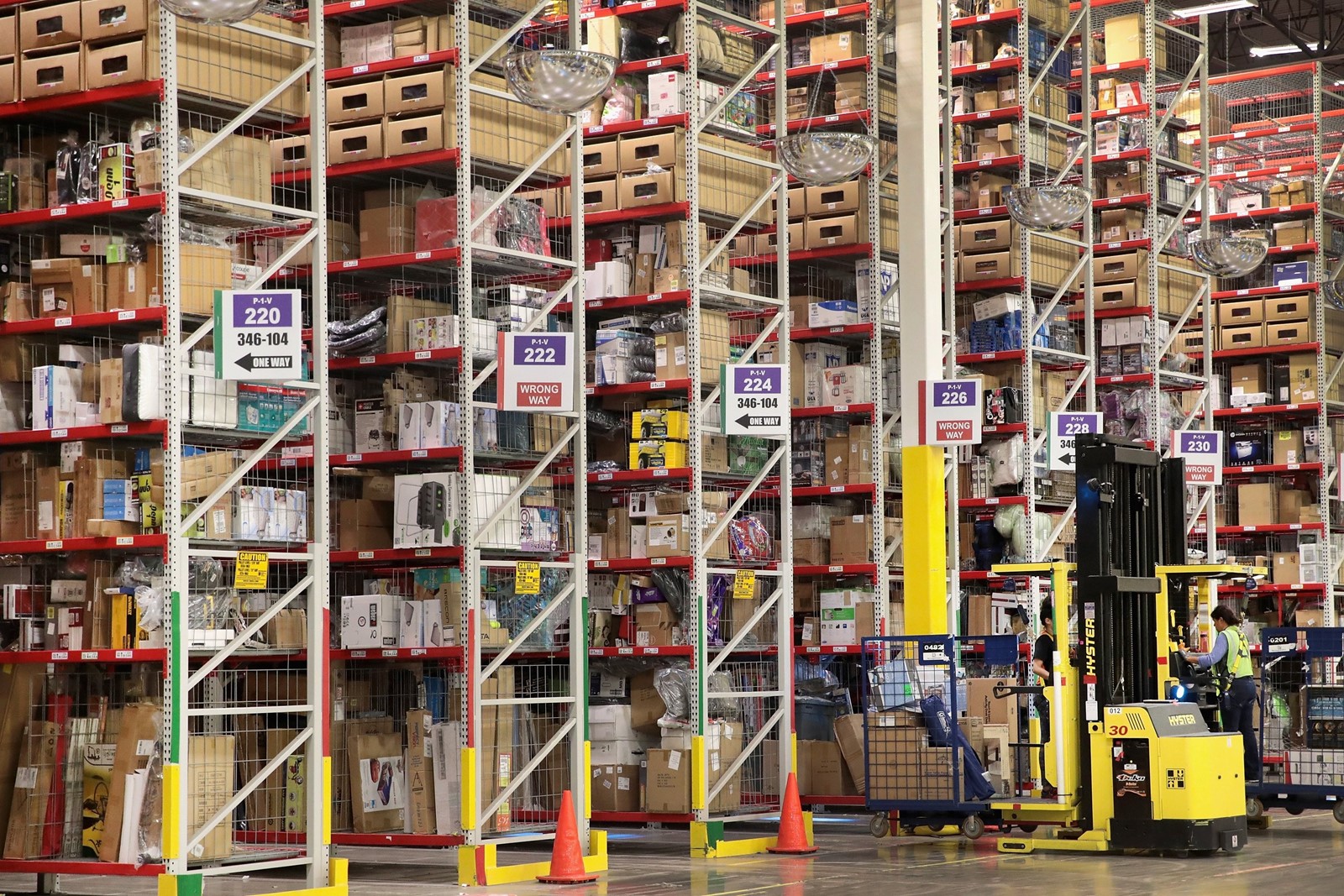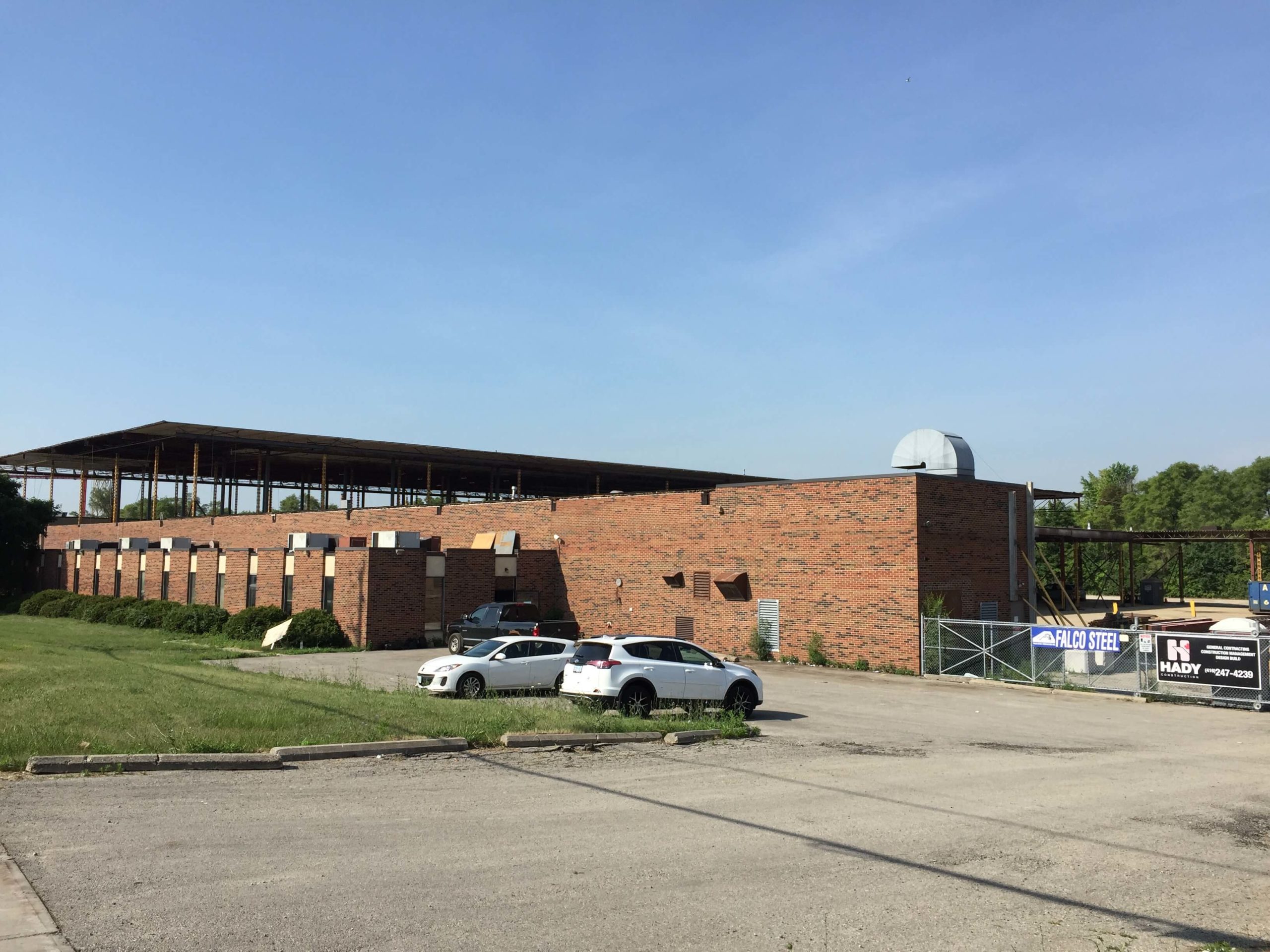The Aurora Foods building in Toronto, Canada, just after the roof was raised from 18 feet to 40 feet. This more than doubled the cubic space of the 100,000-square-foot facility
Increasing clear heights in industrial properties can make older buildings suitable for modern logistics uses.
This article originally appeared in a recent edition of NAIOP Development Magazine and can be read here
Source: Mason Harris, Rooflifters
Cubic space. It’s a measurement that is increasingly more descriptive of the usefulness and value of today’s commercial and industrial properties. With the rising costs of real estate and new construction, many building owners are looking at existing properties with a renewed vision on value. That value is often found in the amount of clear height within a building.
Although located in highly desirable locations, existing buildings often fail to meet the specifications of potential buyers or tenants. One of the most common prohibitive factors found among commercial and industrial properties in today’s maturing market is a low clear height.
Simply stated, industrial and commercial property demands have outgrown the structures that are often found within a city’s urban centers. There are millions of square feet of commercial space in every major city in North America that are becoming non-competitive, even though they are located near highways, airports and urban centers.
The square footage of these buildings generally suits the needs of users. But the bulk of these properties suffer the same undesirable problem — low clear height.
Taking it Higher
However, these buildings can become a great investment opportunity by simply raising the existing roof.
By modernizing the height of these undervalued properties, owners and users have been able to create value. Raising the roof allows the rejuvenation of buildings that have often sat vacant for extended periods of time. It also allows tenants, whose business growth is exceeding their current facility, to maintain their operations without relocating.
With few limitations, roof lifting can be applied to virtually any type and size of roof structure. In many cases, vertical expansion results in doubling or tripling the amount of usable cubic footage in a facility, while keeping the entire existing roof and most of the services intact.
Relocating, building an adjoining space, constructing a new building and other traditional expansion methods are generally more costly. The typical shell-only hard cost of industrial buildings is now coming in around $100 per square foot, though it varies around the country. This does not include soft costs related to civil engineering, planning, etc., that come with new construction.
Expanding upward offers several key incentives and advantages over outward expansion:
• Limited construction and material costs.
• No new land is required.
• Permitting process is much simpler.
• Efficiency and speed of roof lifting reduces downtime.
• Existing roof and attached ceiling systems remain intact and raise with the roof.
Move or Rebuild?
As a company grows, so does the need for space. To remain competitive and grow its business, California-based Experior Laboratories required more room.
The company, which provides independent testing services to component and system manufacturers for a wide range of industries, was about to outgrow its existing facility. Moving the entire business or operating at two locations were not feasible options. Experior Laboratories considered an adjacent building, but at 16 feet clear, it couldn’t accommodate cranes or the testing of larger equipment.
After consulting with Rooflifters, purchasing that building and raising the existing roof to 35 feet clear became the most viable solution. By lifting the facility’s entire existing roof, Experior was able to convert a building with an ideal location into what it needed.
Why was roof lifting the solution for a business like Experior Laboratories? The option to move to a suitable facility certainly exists, as does demolishing the current facility and building a larger one. But those options can have major drawbacks.
First, real estate and construction prices are on the rise in urban areas all over North America. Second, the cost of moving a business can negatively impact a workforce and logistics.
Additionally, moving can require the total suspension of business operations. In this case, laboratory testing equipment would have to be completely disassembled and then reassembled in the new facility.
Rebuilding on the current footprint would require either the complete suspension of business operations or multiple moves. Constructing a new facility would also include a wide range of development and construction costs as well as a number of government regulations, zoning restrictions and taxes to navigate — many of which did not exist when the building was originally built.
Maintaining the existing facility and expanding it outward might seem like an option as well. However, in many instances, this simply is not feasible. If the facility is in a densely populated area, there might not be enough space to expand outward.
Even when there is room on the property to expand outward, the capacity for trucks to have access to the facility could be either significantly limited or even eliminated.
Undervalued Buildings
Allowing a growing industrial business to remain in its current location is not the only reason real estate professionals and business owners are increasing clear heights. It is also an extremely efficient way to enhance a building’s value or attract tenants.
Aurora Foods, a Toronto-based food distribution company with more than 4,000 products, needed to expand its business. When it decided to acquire a larger facility, location was a critical factor.
However, Toronto’s competitive real estate market made it difficult for Aurora to find a suitable facility in the right spot that checked every box. The company eventually found a vacant 100,000-square-foot furniture manufacturing building in the middle of the city that was below market value. It was available at such an attractive price because of the low ceiling height and the limited number of loading docks.
After consulting with Rooflifters and working out the costs, Aurora purchased the building. Knowing that the location was ideal, the company decided to modify a section of the building to create 10 new state-of-the-art loading doors and docks.
It then raised the entire existing roof from 18 to 40 feet, creating Aurora’s new Toronto distribution facility and retail center without sacrificing location.
Potential and Marketability
The Seyon Group, based in Boston, seeks out functionally obsolete industrial properties with the intent to capitalize on undervalued assets.
Knowing the region’s tenants and their desire for cubic space and higher clear heights, it identified a 200,000-square-foot former can manufacturing facility with only 16 feet of clear height. The building simply wasn’t suitable for today’s demands.
Seyon reached out to Rooflifters, and together they prepared a cost analysis and timeline to increase the building’s clear height from 16 to 32 feet and modernize the structure. Once purchased, Seyon demolished the interior spaces and put into place a schedule to raise the roof and retrofit the building. The project is expected to be completed 20 weeks from the time it started.
Seyon was able to fully lease the property before starting construction.
Demand for Volume
According to Rooflifters President Marty Shiff, real estate has become so expensive that it’s rarely feasible to purchase a building, knock it down and rebuild it in the same place.
“With changes to distribution, logistics and consumer demands, many buildings in key locations that have low clear height are being re-evaluated,” he said.
In today’s real estate market, what good is an industrial building without volume? There are efficiencies when considering a typical 100,000-square-foot building with a clear height of 18 feet compared to that same building once the roof has been raised to 32-foot clear height. Without changing the footprint of the original structure, lifting the existing roof provides more than a 75% increase in usable space.
As businesses become increasingly innovative, it only makes sense that they pursue increasingly innovative solutions. It’s the reason industry professionals are looking upward rather than outward when it comes to the need for cubic space.
Mason Harris is the Vice President of Operations for Rooflifters





